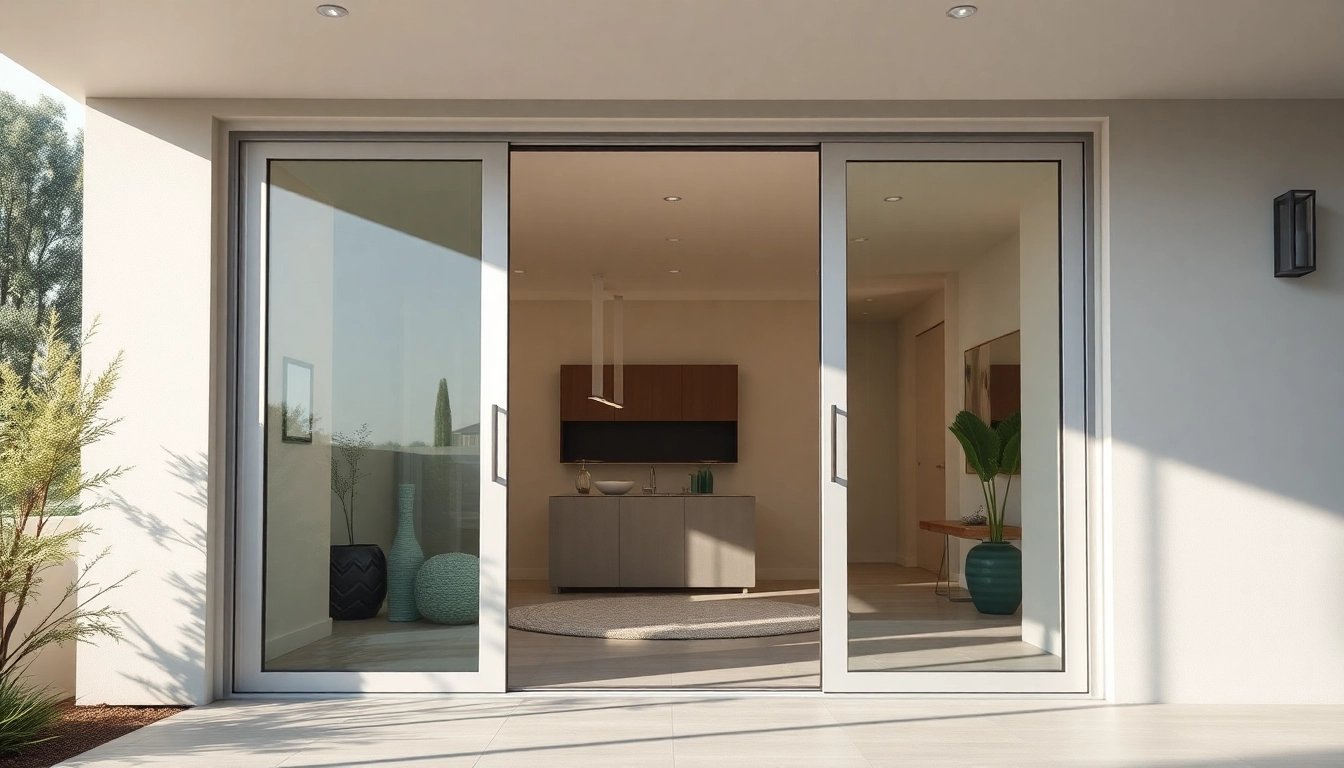
Understanding Remodeling: Definitions and Key Concepts
Remodeling is a transformative process that enhances the functionality, aesthetic appeal, and overall value of a home or commercial space. It involves making significant changes to the structure, layout, or design elements, moving beyond superficial updates to create a space that better suits the needs and desires of its occupants. Whether you’re considering a kitchen overhaul, bathroom upgrade, or a complete home renovation, understanding the fundamentals of remodeling is essential for a successful project.
In essence, remodeling is about reimagining spaces—altering the existing to achieve a new purpose or style. Unlike simple repairs or cosmetic upgrades, remodeling typically involves extensive work such as structural modifications, material replacements, and integrated systems upgrades. It demands careful planning, skilled craftsmanship, and adherence to local building codes to ensure safety, durability, and compliance.
The Difference Between Remodeling and Renovating
While the terms are often used interchangeably, remodeling and renovating have distinct meanings that influence planning and execution.
What is Renovating?
Renovating refers to restoring or updating a space to renew its appearance or improve its functionality without altering its fundamental structure. This can include fresh paint, new flooring, modern fixtures, or cosmetic repairs that enhance visual appeal. Renovations are generally less invasive and less costly, making them suitable for homeowners seeking a facelift rather than a major transformation.
What is Remodeling?
Remodeling involves fundamentally changing the form and layout of a space. It might include moving walls, enlarging rooms, adding new features, or retrofitting systems like electrical or plumbing to accommodate new designs. Remodeling is ideal when a homeowner wants to reconfigure their home to better fit their lifestyle or increase market value, often requiring permits, detailed planning, and higher investment.
Both approaches can significantly boost a property’s value and functionality, but understanding their differences helps homeowners set appropriate expectations and budgets.
Common Remodeling Projects and Their Advantages
Effective remodeling focuses on projects that elevate both the aesthetic and practical aspects of a home. Here are some of the most popular remodeling initiatives and their benefits:
Kitchen Remodeling
The kitchen is often considered the heart of the home. Remodeling can include upgrading countertops, cabinetry, appliances, lighting, and flooring. Benefits include increased functionality, energy efficiency, and a significant boost in property value. Modern designs also emphasize open layouts, smart technology integration, and eco-friendly materials.
Bathroom Remodeling
Bathroom upgrades might involve installing new fixtures, expanding shower areas, or enhancing storage solutions. Improved bathrooms increase comfort and can significantly impact health and safety by replacing outdated plumbing and avoiding leaks. Contemporary innovations such as water-saving fixtures and heated floors add luxury and efficiency.
Basement and Attic Conversions
A popular way to add usable square footage without building an extension. Conversions can create guest suites, home offices, or entertainment spaces, increasing living capacity and property value.
Whole-Home Renovations
Comprehensive projects that transform the entire property. These renovations typically incorporate structural updates, aesthetic overhauls, and systems replacements, resulting in a cohesive, modern living environment.
Overall, these projects offer numerous advantages, including improved functionality, increased market value, better energy efficiency, and enhanced comfort.
Design Trends and Ideas for Successful Remodeling
Keeping abreast of current design trends can inspire successful remodeling projects that stand the test of time and add immediate value to your home. Here are some of the most compelling ideas across different spaces:
Modern Kitchen and Bathroom Remodeling Ideas
- Open-concept layouts that promote seamless flow between living spaces
- Minimalist cabinetry with sleek, handle-free fronts
- Quartz or granite countertops with integrated sinks
- Smart appliances and voice-controlled lighting systems
- Walk-in showers with frameless glass enclosures
- Freestanding tubs with modern fixtures
Incorporating neutral palettes with bold accent tiles or vibrant hardware can elevate the aesthetic. Eco-friendly choices like energy-efficient appliances and water-saving fixtures are increasingly preferred.
Front Porch and Living Room Makeovers
- Replacing traditional porches with modern covered patios featuring weather-resistant materials
- Adding statement lighting and greenery for curb appeal
- Using textured wall panels, area rugs, and statement furniture to define the living space
- Employing smart home technology to control climate, lighting, and security systems
- Integrating large windows or sliding glass doors to maximize natural light
Sustainable and Eco-Friendly Remodeling Options
Eco-friendly remodeling is gaining momentum, driven by a desire to reduce environmental impact and lower utility bills. Examples include solar panels, green roofs, passive solar design, reclaimed wood, and low-VOC paints. Using energy-efficient windows and insulation measures also enhances sustainability.
Incorporating sustainable practices not only benefits the environment but also adds long-term cost savings and attractiveness for eco-conscious buyers.
Planning and Budgeting Your Remodeling Project
Meticulous planning and realistic budgeting are the cornerstones of a successful remodeling initiative. Understanding costs, timelines, and expectations helps prevent overspending and delays.
Setting Realistic Expectations and Budget Parameters
Start with a clear vision of your desired outcome and align it with your financial capacity. Break down the project into phases and prioritize essential features. Maintain a contingency budget of at least 10-15% of the total to address unforeseen issues.
Consulting with industry experts or remodeling contractors can provide valuable insight into costs and timelines, enabling better planning and decision-making.
Choosing the Right Remodeling Contractor
Selecting a qualified, experienced contractor is critical. Look for credentials, reviews, portfolio, and references. Verify licensing and insurance to mitigate liability. A reputable contractor will help you navigate permits, materials selection, and project management efficiently.
Communication is key—ensure your contractor understands your needs and budget constraints for a harmonious working relationship.
Step-by-Step Remodeling Process and Timeline
- Initial Consultation and Concept Design
- Detailed Planning and Budgeting
- Design Finalization and Permitting
- Demolition and Site Preparation
- Structural and Systems Work
- Interior Finishes and Fixtures
- Inspection and Final Walkthrough
Each phase includes specific milestones and often overlaps, requiring careful project management to ensure on-time completion.
Maximizing Value and Longevity of Your Remodel
A successful remodel should stand the test of time, providing long-term value and satisfaction. Focus on quality, durability, and functionality.
Quality Materials and Workmanship
Invest in premium, durable materials suited for your climate and usage. Skilled craftsmanship ensures longevity and reduces future repair costs. For example, choosing high-quality cabinetry, flooring, and fixtures can prevent early deterioration.
Working with reputable suppliers and contractors who guarantee their work can enhance your project’s durability.
Permits, Codes, and Final Inspections
Ensure all necessary permits are obtained before work begins. Adherence to local building codes is crucial for safety and resale purposes. Final inspections by authorities certify that the project meets all standards and regulations.
Measuring Success Through Performance Metrics
Post-remodel, evaluate your project’s success through metrics such as increased property value, energy savings, and user satisfaction. Regular maintenance and periodic upgrades can prolong the lifespan of your renovation investment.
Case Studies and Inspiration for Your Remodeling Journey
Before-and-After Home Transformations
Visualize your dream space through detailed case studies showcasing dramatic transformations. For example, a dated kitchen remodeled into a sleek, functional culinary hub or a cramped bathroom converted into a spa-like retreat. These success stories highlight innovative design, unexpected solutions, and careful planning.
Client Testimonials and Project Highlights
Hearing from satisfied homeowners can inspire confidence. Many clients emphasize improvements in quality of life, increased home value, and the positive experience of working with expert contractors.
Innovative Remodeling Solutions from Leading Experts
Leading remodeling firms employ cutting-edge technology, sustainable practices, and creative design to set new standards. Examples include virtual reality walkthroughs during design, smart home integrations, and eco-conscious material sourcing.






